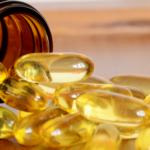Learn Your Labels: What’s in Your Toothpaste?
Dental hygiene is an important part of staying healthy. According to recent studies, dental health has been linked to a variety of diseases including endocarditis, or infection in the inner lining of the heart, cardiovascular disease, pneumonia and pregnancy complications.
Brushing and flossing your teeth and keeping harmful bacteria in the mouth at bay is your best defense against tooth decay and other signs of poor dental health. But what’s in your toothpaste?
In recent years, studies have been conducted on the effect of the compound fluoride in water and toothpaste. Some fluorides occur naturally in soil, air or water, but once inside the body, they travel through the digestive tract into the bloodstream, collecting in areas high in calcium, such as the bones and teeth.
Should You Worry About Flouride?
According to cancer.org, fluoride added to toothpaste to prevent cavities and tooth decay (which isn’t typically swallowed), is no cause for concern. However, a 1990 study by the US National Toxicology Program (NTP) found that high doses of fluoride, such as in drinking water, have been linked to bone cancer in rats. Fluoride is commonly consumed in public drinking water. Taken in high doses over an extended period of time can weaken bones and ligaments, and cause muscle weakness and nervous system problems.
If flouridated toothpaste is a cause for concern, there are several flouride-free options at your local grocery store. Check your labels, brush and floss your teeth after each meal, eat a healthy diet avoiding sugar and visit your dentist at least once a year.










